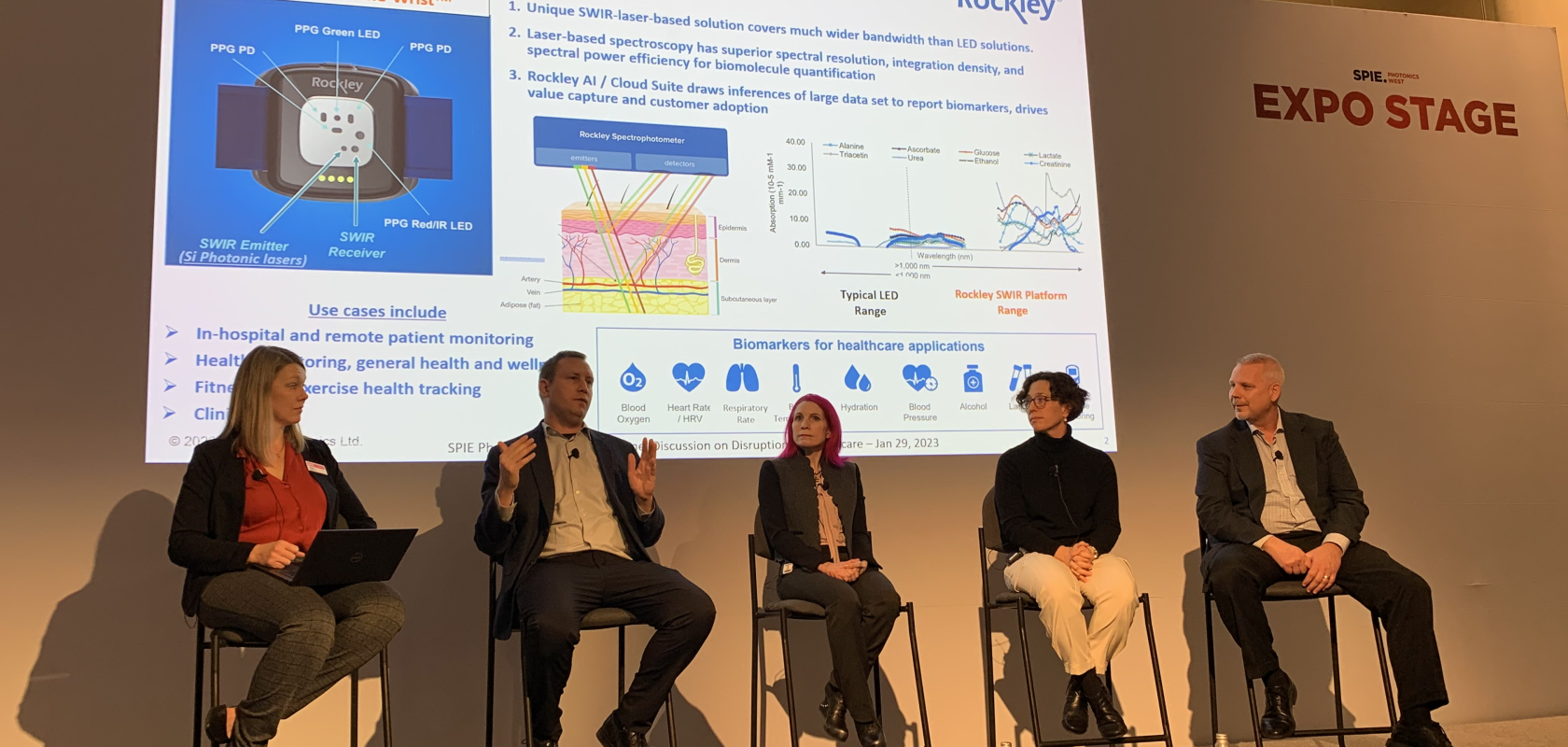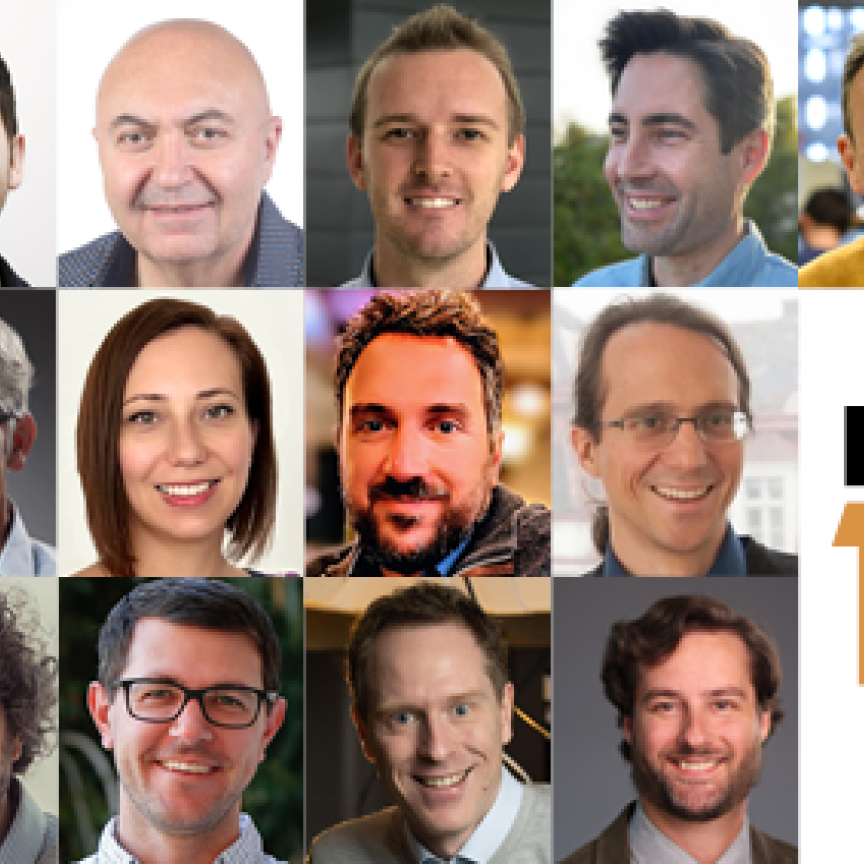Wearable photonics-enabled point of care devices have the potential to dramatically improve modern healthcare. However, handling and interpreting the sheer amount of data produced by such multi-sensor systems presents a formidable challenge that will need to be overcome if these devices are to be used effectively in the future. Such was heard by attendees of a panel discussion at Photonics West this morning.
The futuristic Bioptx wristband under development by Rockley Photonics is just one example. Equipped with silicon photonic lasers emitting in the short-wave infrared, as well as a range of visible photoplethysmogram LEDs and sensors, the device is designed to track biomarkers such as blood oxygen levels, hydration levels, alcohol levels, glucose levels, heart and respiratory rate, and body temperature.
For just one patient alone, such a device is capable of producing an exceptional amount of data. Multiply this across the potentially thousands and even millions of people that could be wearing these devices in the future, then doctors, in addition to facing waiting rooms filled with patients, would also be faced with countless pages of data that need deciphering.
However, ongoing advancements in artificial intelligence (AI) and machine learning (ML) could prove an effective solution to such a challenge, according to the panellists.
“Combining spectroscopy with multiple measurement modalities and adding in machine learning and artificial intelligence to make the inferences of all the data produced, that I think is what the future is – it’s a whole new regime of technology,” said Aaron Zilkie co-founder and Photonics CTO at Rockley Photonics.
However, according to Rachel Kuperman, Founder and CEO of Eysz, one major challenge standing in the way of using AI & ML for such data inference is that creating the labelled datasets required to train the models is incredibly expensive. “While machine learning itself is progressing very rapidly, creation of labelled datasets is not,” she said. “People are very protective of data, there might be datasets out there that are of questionable quality, and I think that's one of the biggest challenges – how do you create and develop those important labelled datasets effectively?”
Even if the AI & ML was able to make sense of the multitudes of data produced by wearable technologies, modern healthcare systems still aren't equipped to deal with this new data stream being sent to doctors. The panellists explained that it is not yet clear how that data would be delivered to hospitals, or even how that data could be secured, stored and then processed by doctors in the limited time they have.
“I would argue that data infrastructure for this is nowhere near built, that's probably one of the biggest gaps right now,” confirmed Zane Arp, Director of the Biomedical Physics Division at the FDA’s Center for Devices and Radiological Health. “AI & ML undoubtedly has some kind of position in medical care. It’s just a question of how do you test it and demonstrate its safety and effectiveness. This isn’t easy considering the technology is still regarded as somewhat of a ‘black box’. So we have to come up with methods and capabilities to actually do that.”


